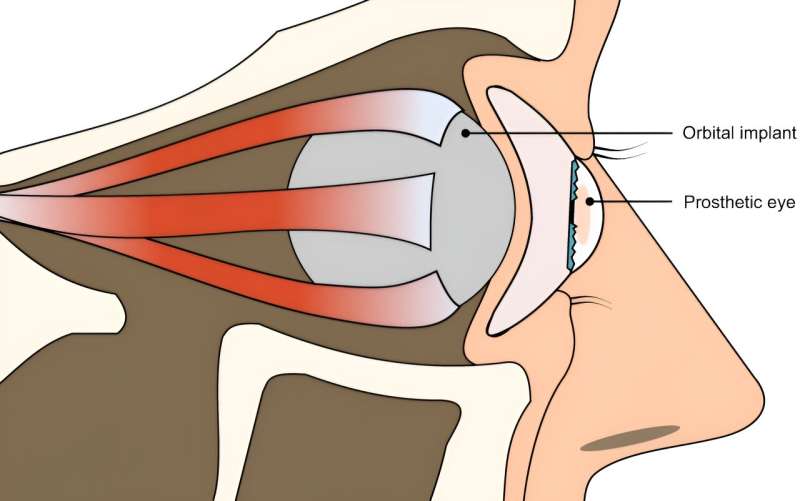February 28, 2024 report
This article has been reviewed according to Science X's editorial process and policies. Editors have highlighted the following attributes while ensuring the content's credibility:
fact-checked
peer-reviewed publication
trusted source
proofread
Using 3D printing to make artificial eyeballs more quickly and accurately

A team of biomedical and ophthalmological researchers from several institutions in Europe, working with computer graphics specialists, has developed a technique for 3D printing artificial eyeballs that is faster, more accurate and less expensive than conventional techniques. Their paper is published in the journal Nature Communications.
Some people lose an eye due to disease or injury, leaving an empty eye socket. In addition to losing sight in one eye, they are left with decisions regarding how to present themselves. Currently, there are two options: wear an eye patch or insert an artificial eye into the empty cavity.
The current process for making an artificial eye involves fashioning an amount of polymethyl methacrylate into an eyeball shape—the shape is determined using an eye mold. After fabrication, it is painted and polished.
The process takes approximately eight hours and can be expensive. It is also prone to mistakes, either in the molding process or the fashioning. A misfashioned artificial eye can result in discomfort or an odd appearance. In this new effort, the research team applied 3D printing to the process, making it much faster, cheaper and more likely to be a good fit.
The work involved first finding a material for use as a printer substrate. They settled on one similar to polymethyl methacrylate. Next, they used optical coherence tomography to scan the empty eye socket. They then entered the results into an application that used computer modeling to more accurately represent both the eye socket and the way the new eyeball would interact with a patient's eyelids. Those results were then printed. After printing, the artificial eye was polished in a tumbler, washed in an ultrasonic bath and tested to make sure it was not toxic to the prospective patient.
The team created 10 test artificial eyeballs and gave them to 10 patients. Eight reported a successful look and feel—the other two reported that the eyeballs did not fit quite right. More work is required but the research team is confident they have found a better way to produce artificial eyeballs.
More information: Johann Reinhard et al, Automatic data-driven design and 3D printing of custom ocular prostheses, Nature Communications (2024). DOI: 10.1038/s41467-024-45345-5
© 2024 Science X Network



















